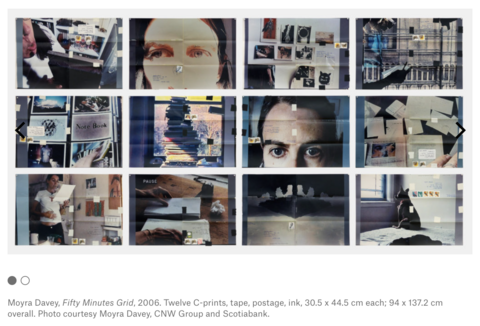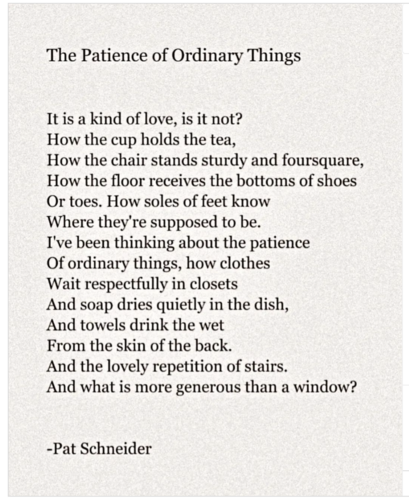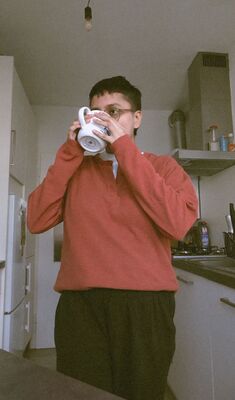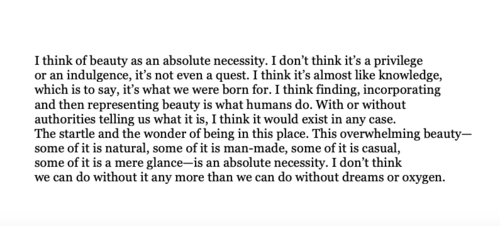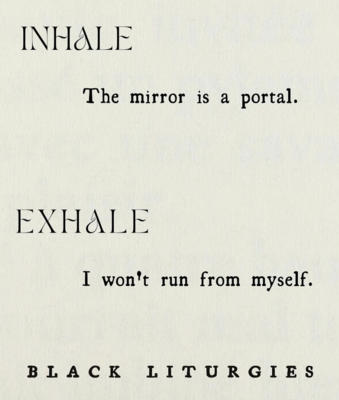Aratrika's latest version: Difference between revisions
No edit summary |
No edit summary |
||
| (18 intermediate revisions by the same user not shown) | |||
| Line 1: | Line 1: | ||
In my practice thus far, image-making has been the first step to discovery and meaning-making. I follow the rhythms of my body and surroundings to make images and then look back on them and see what they could mean to me, what narrative they create for me and my experiences. They also are a way of discovery and documentation of the world around me. ''[not so sure if this kind of vague intro adds any value to the text, but it’s what i have at the moment]'' | |||
'''Portals, a film''' | |||
' | I have been working on a short film for the EYE-project, titled “where is a portal?”. It is a 3-minute long, 4:3 film made up of clips taken on a 2000's digital camera. The footage retains the in-camera colour and light and the sound is the raw ambient sound from the footage itself. It is a visual poem about gateways to other worlds I noticed, looked for and found, or were thrust upon me in my everyday life. Like the winter sun shimmering on the water outside my window, a disappearing and reappearing shadow of my hand on the plastic train seat, a box of wet orange fruit at night. I made it by spending a few days shooting as I went about my daily routines and travels, whipping out the digicam whenever something caught my attention. Then, closer to the deadline, I sat down and looked at the footage all together and used my newfound Da Vinci Resolve skills to see how I could bring a sense of rhythm and flow to the clips so they could inform each other. | ||
Prior to starting this program, my practice has leaned more heavily on making photographs rather than moving images, for various reasons like access to equipment, software, storage, my physical ability… and the process of taking a photograph on a camera, of choosing where to arrange your frame and clicking, has always felt transportive to me, as if the process were a portal, and the outcome a portal to the process. That’s where the seed of the idea of this film comes from. I transposed that into making moving images; for the first time, I intentionally began a project with a topic in mind, shot footage for it, and pieced fragments together in a video editing software. As opposed to my usual image-first approach, which is to be quick to reach for my camera in moments of euphoria when a great song comes on, when I spy a tree branch on a walk that soothes my restlessness, in rare moments of stillness of seeing my shadow on the sidewalk. And at a later moment, looking through my archive and seeing what common themes emerge – nature at night, bodily fluids, spaces with a sense of memory… and grouping my favourite pieces together, playing with their form to work out what the outcome means to me (something I’m still working out). Portals was also my first time shooting on this old digicam and discovering its textures and rhythms. | |||
This project also made me consider portals as unique from person to person, moment to moment. Something you not only stumble upon, but also ones you search for and create. I was talking to a friend about how your portal is telling of you and your desires. It’s also telling of what you want to escape about your reality. A feeling of going elsewhere, like another world is possible and within reach. | |||
[[File:Portals screenshot 1 aratrika.png|center|thumb|480x480px]] | [[File:Portals screenshot 1 aratrika.png|center|thumb|480x480px]] | ||
It has not been so much a part of my research thus far, but in feedback on my work from colleagues and tutors, I have learnt that there is a rich tradition of diaristic work, like the work of Moyra Davey. Coincidentally, around the time I was recommended her work was also the time I had been considering working with collage as a medium of play and sketch. ''[would be nice to tie this collage bit into my “shift” section]'' | |||
[[File:Moyra Davey, "Fifty Minutes Grid", 2006.png|center|thumb|480x480px]] | |||
Although I haven’t studied poetry as part of my research, poems often ground me in my practice because they are accessible, and an almost momentary transporting to another world. I find poems, like photographs, to be portals. For instance, this poem by Pat Schneider, titled “The Patience of Ordinary Things”, really speaks to what drew me to making this film. | |||
[[File:Pat Schneider, The Patience of Ordinary Things.png|center|thumb|500x500px]] | |||
'''Untitled Project, collection of moving images''' | |||
As part of a different ongoing project, I have also been gathering self-recorded clips of myself, mostly in my room where I spend most of my time, often along with clips of things I see from my bedroom window. Because what is more generous than a window? | |||
The clips are of me, dating from 2019-now, alone in my space, performing daily routines, dancing to a song, close shots of my body like my eyes, hair, hands, or mouth while eating lychees, looking into the camera. The videos are all in portrait, taken on my phone, handheld or leaned against a nearby object. These videos are taken on different days but always in moments of solitude, such as after a shower, or while relaxing on the balcony. I am moved to film something because of a certain sound I hear, the way I see light hit my body, certain textures of wetness or stickiness, or extreme emotions of joy or sadness. These clips are often taken using glitchy or over-processed-looking filters. The videos retain their original sound, some of which are a song playing in the background, or the sound of the rain, or leaves rustling in the wind. My current vision for these clips is that of a montage (by the process of putting them into a video editing timeline, playing around with them in terms of order, duration, colour, taking note of what themes or narratives emerge, and experimenting with various iterations) ''[can cut this bracketed text altogether perhaps]'', or a multi-channel video installation in a space, maybe automated in a sense via a software like TouchDesigner (a skill I would like to pick up). There may or may not be overlaying audio or text that builds a narrative. | |||
[[File:Screenshot self video with filter 2024 aratrika.jpg|centre|thumb|400x400px]] | [[File:Screenshot self video with filter 2024 aratrika.jpg|centre|thumb|400x400px]] | ||
Looking back, my reasons for taking this footage have evolved since I began this program. Initially, I was interested in the interaction of camera movement with disembodied details of the physical body and live sound. I was also interested in what quality distortion and overlaying filters can bring out in these videos, and in the materiality and textures of the surface of the screen. What does it mean to manipulate a digital surface, whether the manipulation happens in-camera or in post? I wanted to explore what kind of mood these combinations of techniques can elicit in video work. | |||
The other reason for my interest, which has grown in significance these past few months, is that I am interested in the ways we choose to depict ourselves, and who has the agency to choose and build their identities. ''[“Under this umbrella, I’m considering themes of performance, which is something I would like to explore more by learning about other works that interest me in this field.” will probably leave this performance bit out since i’m not sure how to flesh it out]'' | |||
''[this feels like a good place to lead into the “shift” section, but i’m not sure if it’s a good place/necessary to add a subheading to clearly indicate it’s not part of the second project’s description?]'' | |||
I’m writing this in a moment of what feels like a shift in what I value in the outcomes of my practice. In the past year or so, I have been grappling with things happening in the world that were once in the back of my mind, but are now in the forefront as I go about my daily life. The genocide in Gaza, the ongoing mass death and disabling event of the pandemic, my delayed introduction into anti-caste schools of thought, to name a few, are things that have led me to become (for lack of a better word) more radicalised. I am more cognisant of the world’s response to these events, and critically and urgently considering my role in them. Perhaps moving away from home has provided me with the space for a clearer sense of my position to come about. Which now has me questioning… What does this shift demand from my practice? What is the space in my existing practice, if any, to incorporate these new elements into it? | |||
These are big questions I’m still finding tools to work through. A possible answer I have to the second question can be illuminated by this quote from a Toni Morrison interview, | |||
[[File:Toni morrison on beauty.png|center|thumb|500x500px]] | |||
A possible entrypoint for these new elements into my work is the relationship, or possible tension between finding the beauty in the mundane, and the rapidly worsening lives of people under caste dominance, capitalism, imperialism. Is a radical commitment to finding beauty in your everyday life a possible tool of counterbalancing overconsumption and the industry of death, of true connection? In terms of tension, I’m thinking of the function of time: of the urgency of the issue of growing atrocities around me, and the neutral pace of my daily routine. Where does this tension begin and what does it illuminate? | |||
With these in mind, I’m envisioning moving forward by spending a lot of time playing and sketching, maybe trying different media like collage and photo and text and see what that brings up for me. I want to get out of my head and channel my energy into making and see where that leads me. I want to use playing and sketching as a tool to explore this shift in me, and to use this shift in me to explore my work. | |||
I also want to return to my practice of making more photographs. I feel like the program so far has been focused a lot more on moving images (which I want to continue exploring), and I think returning to the feelings of extended time and compact information I find in photographs may provide me with the right grounds for further contemplation. | |||
A commitment, | |||
[[File:Black Liturgies (Cole Arthur Riley), on mirrors and the self.png|center|thumb|400x400px]] | |||
And a final poem, "On Seeing and Being Seen", by Ama Codjoe: | |||
[[File: | [[File:Ama Codjoe, On Seeing and Being Seen.png|center|thumb|500x500px]] | ||
final word count: around 1600 | |||
Latest revision as of 23:03, 21 March 2024
In my practice thus far, image-making has been the first step to discovery and meaning-making. I follow the rhythms of my body and surroundings to make images and then look back on them and see what they could mean to me, what narrative they create for me and my experiences. They also are a way of discovery and documentation of the world around me. [not so sure if this kind of vague intro adds any value to the text, but it’s what i have at the moment]
Portals, a film
I have been working on a short film for the EYE-project, titled “where is a portal?”. It is a 3-minute long, 4:3 film made up of clips taken on a 2000's digital camera. The footage retains the in-camera colour and light and the sound is the raw ambient sound from the footage itself. It is a visual poem about gateways to other worlds I noticed, looked for and found, or were thrust upon me in my everyday life. Like the winter sun shimmering on the water outside my window, a disappearing and reappearing shadow of my hand on the plastic train seat, a box of wet orange fruit at night. I made it by spending a few days shooting as I went about my daily routines and travels, whipping out the digicam whenever something caught my attention. Then, closer to the deadline, I sat down and looked at the footage all together and used my newfound Da Vinci Resolve skills to see how I could bring a sense of rhythm and flow to the clips so they could inform each other.
Prior to starting this program, my practice has leaned more heavily on making photographs rather than moving images, for various reasons like access to equipment, software, storage, my physical ability… and the process of taking a photograph on a camera, of choosing where to arrange your frame and clicking, has always felt transportive to me, as if the process were a portal, and the outcome a portal to the process. That’s where the seed of the idea of this film comes from. I transposed that into making moving images; for the first time, I intentionally began a project with a topic in mind, shot footage for it, and pieced fragments together in a video editing software. As opposed to my usual image-first approach, which is to be quick to reach for my camera in moments of euphoria when a great song comes on, when I spy a tree branch on a walk that soothes my restlessness, in rare moments of stillness of seeing my shadow on the sidewalk. And at a later moment, looking through my archive and seeing what common themes emerge – nature at night, bodily fluids, spaces with a sense of memory… and grouping my favourite pieces together, playing with their form to work out what the outcome means to me (something I’m still working out). Portals was also my first time shooting on this old digicam and discovering its textures and rhythms.
This project also made me consider portals as unique from person to person, moment to moment. Something you not only stumble upon, but also ones you search for and create. I was talking to a friend about how your portal is telling of you and your desires. It’s also telling of what you want to escape about your reality. A feeling of going elsewhere, like another world is possible and within reach.
It has not been so much a part of my research thus far, but in feedback on my work from colleagues and tutors, I have learnt that there is a rich tradition of diaristic work, like the work of Moyra Davey. Coincidentally, around the time I was recommended her work was also the time I had been considering working with collage as a medium of play and sketch. [would be nice to tie this collage bit into my “shift” section]
Although I haven’t studied poetry as part of my research, poems often ground me in my practice because they are accessible, and an almost momentary transporting to another world. I find poems, like photographs, to be portals. For instance, this poem by Pat Schneider, titled “The Patience of Ordinary Things”, really speaks to what drew me to making this film.
Untitled Project, collection of moving images
As part of a different ongoing project, I have also been gathering self-recorded clips of myself, mostly in my room where I spend most of my time, often along with clips of things I see from my bedroom window. Because what is more generous than a window?
The clips are of me, dating from 2019-now, alone in my space, performing daily routines, dancing to a song, close shots of my body like my eyes, hair, hands, or mouth while eating lychees, looking into the camera. The videos are all in portrait, taken on my phone, handheld or leaned against a nearby object. These videos are taken on different days but always in moments of solitude, such as after a shower, or while relaxing on the balcony. I am moved to film something because of a certain sound I hear, the way I see light hit my body, certain textures of wetness or stickiness, or extreme emotions of joy or sadness. These clips are often taken using glitchy or over-processed-looking filters. The videos retain their original sound, some of which are a song playing in the background, or the sound of the rain, or leaves rustling in the wind. My current vision for these clips is that of a montage (by the process of putting them into a video editing timeline, playing around with them in terms of order, duration, colour, taking note of what themes or narratives emerge, and experimenting with various iterations) [can cut this bracketed text altogether perhaps], or a multi-channel video installation in a space, maybe automated in a sense via a software like TouchDesigner (a skill I would like to pick up). There may or may not be overlaying audio or text that builds a narrative.
Looking back, my reasons for taking this footage have evolved since I began this program. Initially, I was interested in the interaction of camera movement with disembodied details of the physical body and live sound. I was also interested in what quality distortion and overlaying filters can bring out in these videos, and in the materiality and textures of the surface of the screen. What does it mean to manipulate a digital surface, whether the manipulation happens in-camera or in post? I wanted to explore what kind of mood these combinations of techniques can elicit in video work.
The other reason for my interest, which has grown in significance these past few months, is that I am interested in the ways we choose to depict ourselves, and who has the agency to choose and build their identities. [“Under this umbrella, I’m considering themes of performance, which is something I would like to explore more by learning about other works that interest me in this field.” will probably leave this performance bit out since i’m not sure how to flesh it out]
[this feels like a good place to lead into the “shift” section, but i’m not sure if it’s a good place/necessary to add a subheading to clearly indicate it’s not part of the second project’s description?]
I’m writing this in a moment of what feels like a shift in what I value in the outcomes of my practice. In the past year or so, I have been grappling with things happening in the world that were once in the back of my mind, but are now in the forefront as I go about my daily life. The genocide in Gaza, the ongoing mass death and disabling event of the pandemic, my delayed introduction into anti-caste schools of thought, to name a few, are things that have led me to become (for lack of a better word) more radicalised. I am more cognisant of the world’s response to these events, and critically and urgently considering my role in them. Perhaps moving away from home has provided me with the space for a clearer sense of my position to come about. Which now has me questioning… What does this shift demand from my practice? What is the space in my existing practice, if any, to incorporate these new elements into it?
These are big questions I’m still finding tools to work through. A possible answer I have to the second question can be illuminated by this quote from a Toni Morrison interview,
A possible entrypoint for these new elements into my work is the relationship, or possible tension between finding the beauty in the mundane, and the rapidly worsening lives of people under caste dominance, capitalism, imperialism. Is a radical commitment to finding beauty in your everyday life a possible tool of counterbalancing overconsumption and the industry of death, of true connection? In terms of tension, I’m thinking of the function of time: of the urgency of the issue of growing atrocities around me, and the neutral pace of my daily routine. Where does this tension begin and what does it illuminate?
With these in mind, I’m envisioning moving forward by spending a lot of time playing and sketching, maybe trying different media like collage and photo and text and see what that brings up for me. I want to get out of my head and channel my energy into making and see where that leads me. I want to use playing and sketching as a tool to explore this shift in me, and to use this shift in me to explore my work.
I also want to return to my practice of making more photographs. I feel like the program so far has been focused a lot more on moving images (which I want to continue exploring), and I think returning to the feelings of extended time and compact information I find in photographs may provide me with the right grounds for further contemplation.
A commitment,
And a final poem, "On Seeing and Being Seen", by Ama Codjoe:
final word count: around 1600


